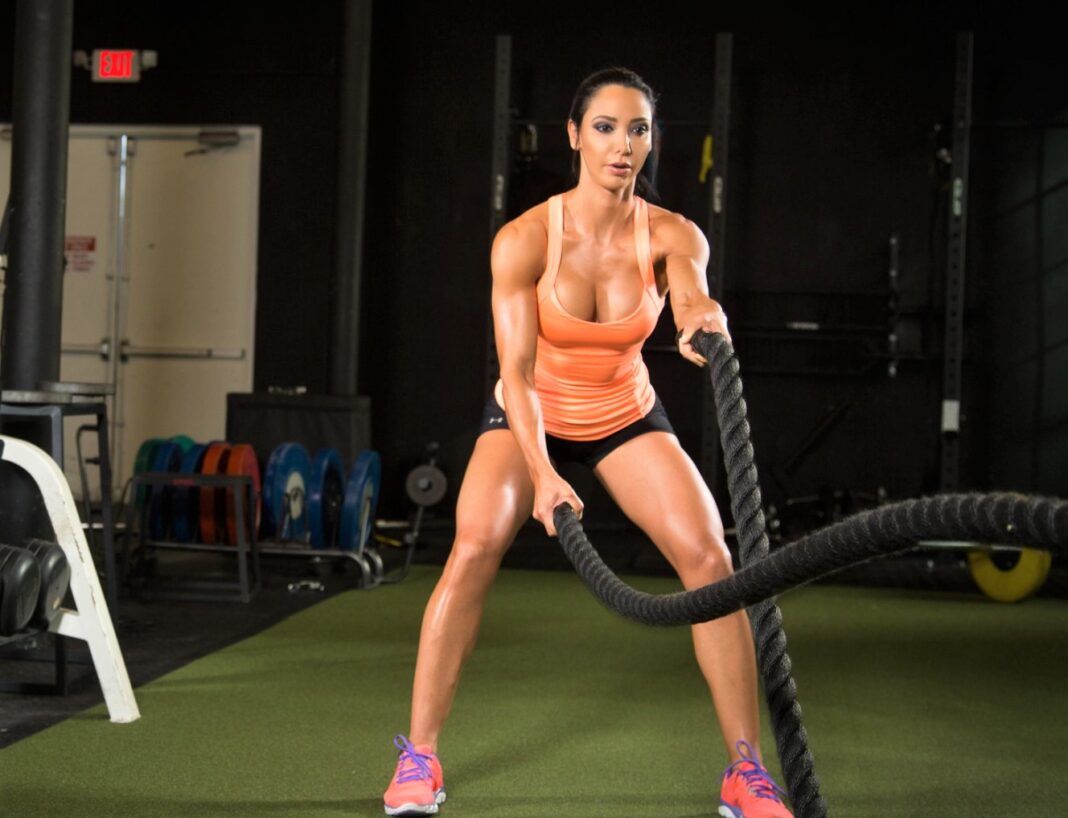Model: Hoda Jarrah / Goodfon
What exactly is a holistic workout? Put simply, it’s a hybrid of different training styles. Think CrossFit, but not necessarily CrossFit. Holistic training is nothing new. It’s been around since the beginning of resistance training. As just one old-time example, two-time Mr. Olympia Franco Columbu sometimes did powerlifting, boxing, Olympic weightlifting, and running in addition to traditional bodybuilding sets and reps. And that was way back in the Nixon era.
Today’s weight-trainers can also benefit from similar inclusiveness by incorporating a variety of techniques in the same workouts or in separate sessions throughout a workout program. Going holistic can broaden your focus beyond gaining muscle to burning fat, boosting power, and increasing dexterity. Let’s explore holistic workouts and how to best incorporate different styles in your training program.
GOING HOLISTIC
The best rep range for growth is 8-12, and exercises should generally be performed for three or four working sets in that range. But that’s not the only way to grow. In fact, utilizing the same sets and reps workout after workout will inevitably lead to stagnation. By incorporating a variety of styles and techniques, holistic training can keep your enthusiasm peaked, your muscles expanding, and it can allow you to focus on other goals, such as jumping ability for basketball or rapid acceleration for football.
There are three ways to go holistic.
1. Rotating Cycle
You can change your training style periodically. For example, you could do one week of plyometrics followed by two weeks of power training, followed by three weeks of moderate sets and reps. Each of those three segments is one cycle. Sticking just to weight-training, the Y3T method devised by Neil Hill utilizes three cycles over three weeks: week one is focused on heavy, compound exercises; week two is focused on moderate compound and isolation exercises; and week three is focused on high-reps and high-intensity. But you don’t have to stick just to weight-training. Any training method, from calisthenics to kick-boxing to swimming to bicycling can be done for a cycles. Holistic cycling allows you to compartmentalize your training into segments of one to four weeks with each segment devoted to a different workout approach.

2. Staggered Split
Another way to go holistic is to change your style from workout to workout. Don’t do this randomly or you’ll likely foster chaos as one workout collides with another. Instead, stagger your split so body parts go through the same style rotation but on different weekly schedules. For example, you might do a power workout for legs one day and a high-rep session for back the next day. Then, the next week you’ll reverse that. Our sample staggered split below includes a different workout style for every body part over four weeks.
3. Holistic Workout
Advanced weight-trainers can change styles from exercise to exercise or even, during the same exercise, from set to set. As with the cycle and split holistic methods, holistic workouts require planning. Don’t wing it. Instead, plot out sessions wherein one style can compliment another and all styles together are stronger than any one individually. Our sample leg routine below strives to do this by starting with plyometrics (box jumps and explosive box squats), progressing to high-intensity (leg extensions, leg presses, seated leg curls), then pumping up and exhausting the muscles with high reps (leg adduction, hack squats), and, for those with the space and equipment, ending with a functional exercise (sled push). A routine such as this can allow you to focus on more than one goal at once. In our example, there are five goals: speed, power, muscle growth, endurance, and functional ability.
HOLISTIC WORKOUT BASICS
Variety can boost your intensity and focus.
Holistic is great way to incorporate power and speed training into a bodybuilding program.
It’s also ideal for those who do other athletic activities, such as football or kickboxing, in addition to weight-training.
Doing plyometric exercises like battle ropes, box jumps, and speed pushups can aid your weight-training.
HOLISTIC TRAINING TIPS
Don’t wing it. Plot out your cycles, splits, and workouts carefully.
Cardio can also be holistic. Utilize more than one machine in the same workout, and/or try to incorporate non-mechanical activities such as sprinting intervals, swimming laps, pummeling a heavy bag, or full-court basketball.

HOLISTIC ROTATING CYCLE
This is an example of a holistic rotating cycle that incorporates other types of training with traditional weight-training. Cardio endurance can be anything from running to boxing to racket sports and much more. Moderate weight-training sets should be 10-15 reps; heavy sets are 6-10 reps.
Week 1 — Plyometrics and Calisthenics
Week 2 — Weight-training (moderate)
Week 3 — Cardio Endurance
Week 4 — Weight-training (heavy)
HOLISTIC WORKOUT STAGGERED SPLIT
This example of a holistic staggered split is focused only on weight-training, though it doesn’t have to be. HIT is high-intensity, so push working sets to failure and beyond with techniques like rest-pause, forced reps, and drop sets. High-rep is 15-25 reps. Power is 4-8 reps. Moderate is 8-12 reps.
| Week 1 | Week 2 | Week 3 | Week 4 | ||
| Mon. | quads & hams | HIT | high-rep | moderate | power |
| Tues. | chest & triceps | high-rep | moderate | power | HIT |
| Thurs. | back & biceps | moderate | power | HIT | high-rep |
| Fri. | shoulders | power | HIT | high-rep | moderate |
HOLISTIC LEG WORKOUT
This example of a holistic leg routine goes from plyometrics to high-intensity to 100-rep drop sets and ends with a functional exercise.
Plyometric Box Jump — 2 x 10 reps
Plyometric Box Squat — 2 x 10 reps
Leg Extension — 2 x 6-10 reps*
Leg Press — 2 x 6-10 reps*
Seated Leg Curl — 2 x 6-10 reps*
Leg Adduction — 1 x 100 reps**
Hack Squat — 1 x 100 reps**
Sled Push — 2 x 70-100 feet (21-30 meters)
* All working sets are to failure with 2-4 extra rest-pause reps and preceded by one or two warmup sets.
** Do as many drops as necessary to reach 100 reps.
Related: Circuit Training Guide
















































